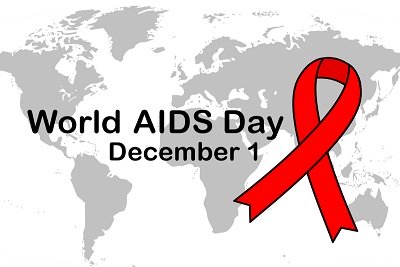












World AIDS Day is annually observed on December 1 worldwide to promote awareness about the cause, cure and prevention of Human Immunodeficiency Virus (HIV) and Acquired Immune Deficiency Syndrome (AIDS) in Humans. The day also provides a platform for the people living with HIV to share their life stories with the society and various stigmas they live with. The world at large showcase their solidarity with the infected population and pledge to create an inclusive society that ensures an unbiased treatment and equal opportunities for the people infected with the Virus.
World AIDS Day was first proposed in 1987 by two World Health Organization personnel working in the capacity of public information officer for the Global Program on AIDS, James W. Bunn and Thomas Netter, in order to increase the awareness about the HIV/AIDS pandemic across the world. The aim of introducing a day particularly dedicated to addressing the issue was to dispel various myths and flawed knowledge about the disease and increase awareness amongst the common people. The uncertainty and fear surrounding the HIV/AIDS began to affect the lives of the infected people so severely that they were forced to face many stigmas and prejudice in the society. For instance, HIV/AIDS patients were forced into isolation, barred from attending schools, colleges and other communities and take part in general activities. Thus, the United Nations-affiliated organizations observed the first World AIDS Day on December 1, 1988.
The Joint United Nations Programme on HIV/AIDS (UNAIDS) launch a theme for the World AIDS Day campaign every year. The 2017 year campaign was My Health, My Right. The campaign was designed to promote the Right to Health and address the health-related challenges faced by people across the world.
Every year NGO's working in the health sector, local administration and social groups, schools, colleges, hospitals, societies and forums conduct various events to encourage public participation in spreading the awareness about HIV/AIDS. Lectures, seminars, rallies, marathons, street plays, skits, drawing competitions and many other activities are conducted across the world in order to raise awareness and help common people develop a comprehensive understanding about the epidemic. As due to the various stigmas attached to the disease, the infected people live in incessant fear of losing out and forced to live a life in isolation deprived of fundamental rights. Thus, creating a prejudice-free society or a world, that not only show compassion to the victims of HIV but also gives them chance to lead a normal and fulfilling life.
Red Ribbon is a symbol which is used across the world to showcase support for the people living with the HIV and who have lost their lives fighting with the disease. Red Ribbon is especially worn on the World AIDS Day when people proclaim their support and stand in unison against the fight with HIV/AIDS.